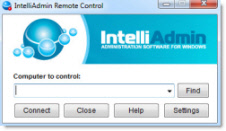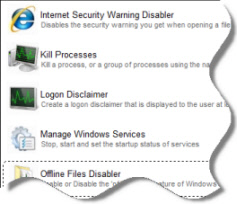Paging File
Last week, I posted a question tited "Virtual Memory" but to my disappointment, no one has provided an answer or further insight. So I'll guess I'll start with a more basic question and see if that can spark a response.
What is the basic role of the "Paging File" in a Window's operating system?
November 7th, 2010 4:02pm
The pagefile is really just a file on the hard disk that is set up so that it operates like RAM. Problem is, RAM is fast
and hard disks are slow. So, having to read or write to the hard disk when the system needs to satisfy a memory request can be very time consuming.
To speed access to the paging file, it is recommended to place it on a separate physical disk than the operating system.
Better yet, create multiple paging files on different disks, or even on multi-disk arrays for real speed. You may have read here before that we need a paging file on the system disk in order to catch things like memory dumps, and that is true. However it is
not normally necessary to have every machine configured to be able to capture full size memory dumps unless you are in a troubleshooting situation and it is recommended. Usually, you can keep the system drive set up with a small 1 or 2 GB pagefile and still
be able to catch even a full kernel dump if needed.
The total size of the pagefiles you might need is another one of those things that you will get many different opinions
on, so I am no going to offer one. To make this determination on your own, you can set up your pagefiles to System Managed and run the machine under a normal load for a few days. Again, use Perfmon to monitor the system and keep an eye on Paging File –
%Usage. If your percentage of pagefile usage gets too high, or especially if your pagefile expands, then you most likely need to set the total size to be larger.
NOTE: The recommendations above pertaining
to RAM and pagefile are just simple guidelines and may need to be tweaked based on various factors including page faults/second, disk idle and cache bytes.
You can read more on the following link:
http://portal.sivarajan.com/2010/11/windows-server-2008-r2-performance.html
Here is another good article:
http://support.microsoft.com/kb/2267427
Please let us know if you have any specific question about page file.
Santhosh Sivarajan | MCTS, MCSE (W2K3/W2K/NT4), MCSA (W2K3/W2K/MSG), CCNA, Network+ Houston, TX
Blogs - http://blogs.sivarajan.com/
Articles - http://www.sivarajan.com/publications.html
Twitter: @santhosh_sivara - http://twitter.com/santhosh_sivara
This posting is provided AS IS with no warranties, and confers no rights.
Free Windows Admin Tool Kit Click here and download it now
November 7th, 2010 4:20pm
Thanks for the response.
So is it accurate to state that a "Paging File" will not come into use until after the physical RAM is exhausted?
Also is it accurate to state that while the OS has a limt of 2 GB of virtual memory total, all other applications have "limitless" amounts of virtual memory. Or by "Limitless" do we mean that applications can have as much virtual memory as the physical
machine would allow (I.e., 4 GB in an XP machine).
November 7th, 2010 8:34pm
Hi,
Additionally, I would like to share the following documents:
What is the Page File for anyway?
Pushing the Limits of Windows: Virtual Memory
Best Regards
DalePlease remember to click Mark as Answer on the post that helps you, and to click Unmark as Answer if a marked post does not actually answer your question. This can be beneficial to other community members reading the thread.
Free Windows Admin Tool Kit Click here and download it now
November 9th, 2010 3:36am


